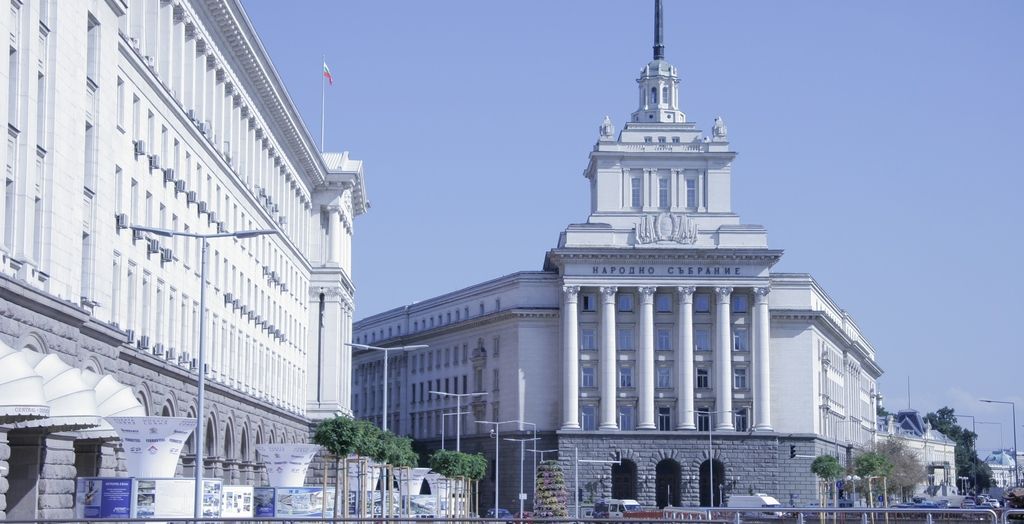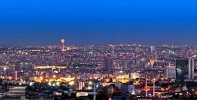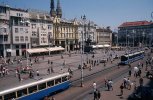
Sofia is the capital and largest city of Bulgaria which is located in the Sofia valley of river Iskar basin, at the altitude of 540 meters. Established seven thousand years ago, Sofia is the second oldest city in Europe. Throughout history it had several names and the remains of the old city can still be seen. It is an important crossroad of the Balkan Peninsula, where the strategic routes from Europe to the Orient meet. The Baltic and the Mediterranean, the Black and Adriatic Sea, have also met here back in the old days.
Sofia valley or Sofia field is wide fertile valley in western Bulgaria, located between the mountains of the Balkans in the north and the Rhodope in the south, at the altitude of about 550 meters and the area of over 500 square kilometers. Its main settlement is exactly in the capital Sofia and thanks to the river Iskar and its numerous tributaries, it is easily being irrigated. This is the only European capital that is located at the foot of the mountain which reaches 2290 meters above the sea level, where the distance from the center to the modern ski trails can be crossed in a 20 min drive.
Vitosha, a National Park nearby, is famous for its huge diversity of plants, unique river stones (moraine), a beautiful waterfall Boyana, a few log cabins and hotels, ski slopes, ski lifts, etc. There are two reserves - Bistrishko Branishte, a biosphere reserve of UNESCO, and Torfeno Branishte, a peat nature reserve, as well as many other natural sites.
Since the ancient times, Sofia was known as a spa, thanks to eight healing thermal and mineral springs, shown in drawings of its inhabitants and conquerors over the centuries. The city is famous for its hot mineral water, whose temperature varies from 21ºC to 42ºC, which originates with the high therapeutic properties and healing powers. The center of the modern city is abundant in these waters.
The Bulgarian capital is named after the famous temple. Its rich history is illuminated by sanctity and symbolism of this name that was given after the Goddess of wisdom. The territory of today's multimillion city was already in the Neolithic period inhabited by primitive societies. The archaeologists are still finding instruments and tools made in the Stone, Bronze and Iron Age in its surrounding areas.
Its ancient name was Serdica since it was the central settlement of the ancient Thracian tribe known as Serdi. The Huns occupied it in 447, but at the beginning of the 9th century the Bulgarians came and this settlement became a part of their country, under the same name. Soon enough it was recognized as one of the most important feudal towns, taking the Slavic name Sredets, which will be used until the 14th century, when it will be finally named as Sofia.
It was under the Ottoman rule in the period from 1382 until 1877, yet its fall was followed by a renewal after the liberation in 1879, when Sofia was chosen for the capital of Bulgaria in the first gathering of the National Constituent Assembly. After that, from 1881 until 1882, a sharp and direct recovery period followed.
The Saint Sofia Church dates back to the 4th century and it is the oldest monument of the early Christian era in the Balkans. It was built during the reign of Byzantine Emperor Justinian (527-565). This church is the first ever renewed archaeological site of interest in Sofia. It was finally rebuilt in the period from 1998 until 2001.
The Rotunda of Saint George is the best preserved ancient building in Sofia from the 4th century. It represents a fine example of Byzantine church with a cross in the quadrate type of the dome. Around the church you can see ancient buildings and streets, medieval houses from the 7th until the 9th century, the foundations of the wall of the fortress etc.
The "Saint Kliment Ohridski" University of Sofia is the first higher education institution in Bulgaria (founded in 1888). On either side of the main entrance, there are sculptures of Brothers Georgiev, erected to commemorate their donation of resources for building a university.
The edifice of the "Ivan Vazov" National Theatre is one of the most beautiful buildings in Sofia (founded in 1907). This is the oldest theater in Bulgaria, built after the Liberation of Bulgaria in 1878. This theater is the successor of the drama company "Tears and Laughter", which is from 1904 called - Bulgarian popularly theater.
During the totalitarian regime (09th of September 1944 - 10th of November 1989), Sofia became a major national economic, academic and cultural center. Through its years of socialist growth, the capital however, has inherited huge problems, which are the priority of the democratically elected Council of Sofia at the present.
In 1992, in honor of the Saint Martyr Sofia, the Government has chosen 17th of September as the national Day of Sofia. Flag of the city was consecrated on the same day.

